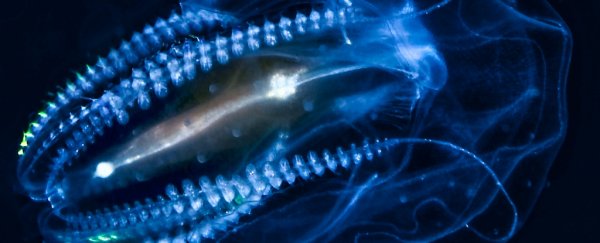The search for a habitable exoplanet has been a frustrating one. Although we've found a bunch of rocky planets orbiting at the right distance from their star, further investigation has so far mostly yielded nothing but barren poisonous rocks lashed with deadly stellar flares.
But according to new research using computer modelling to explore the conditions that could exist on different types of exoplanets, there could be places out there where life absolutely thrives - even more than it does on Earth.
And it all has to do with oceans.
"Our work has been aimed at identifying the exoplanet oceans which have the greatest capacity to host globally abundant and active life," explained geophysicist Stephanie Olson of the University of Chicago.
"Life in Earth's oceans depends on upwelling (upward flow) which returns nutrients from the dark depths of the ocean to the sunlit portions of the ocean where photosynthetic life lives. More upwelling means more nutrient resupply, which means more biological activity. These are the conditions we need to look for on exoplanets."
Olson and her team used software called ROCKE-3D developed by NASA's Goddard Institute for Space Studies to model rocky exoplanets. They modelled a range of different exoplanets to explore which would be the most likely to develop and sustain life, based on ocean circulation.
They found that thicker atmospheres combined with slower rotation rates and the presence of continents all produced higher upwelling rates.
"This is a surprising conclusion," Olson said.
"It shows us that conditions on some exoplanets with favourable ocean circulation patterns could be better suited to support life that is more abundant or more active than life on Earth."
We know that salty oceans are likely out there, beyond the Solar System. In addition to Earth, we know Mars was once rather watery, for instance. And there are the moons, too - Europa, Enceladus, Callisto and Ganymede number among the large moons in the Solar System that appear to have liquid oceans.
These nearby worlds don't meet the criteria laid out by the research, though. Mars is dry and has a thin whisper of an atmosphere, and the moons listed have barely-there atmospheres as well; we're also currently unsure of their continental status.
But there are a lot more exoplanets out there in the galaxy than there are moons in the Solar System. Last year, scientists released an estimate that up to 35 percent of all known exoplanets bigger than Earth should be rich in water.
So far, the first criterion in the search for habitable exoplanets has been whether a planet is in the "habitable zone" - where temperatures are not so hot that liquid oceans would vaporise, nor so cold that they would freeze.
This new research adds some parameters that could be employed on future searches, and may even inform the development of instrumentation optimised for detecting said parameters.
"In our search for life in the Universe, we should target the subset of habitable planets that will be most favourable to large, globally active biospheres," Olson said, "because those are the planets where life will be easiest to detect - and where non-detections will be most meaningful."
The research was presented at the Goldschmidt Geochemistry Congress in Barcelona.
